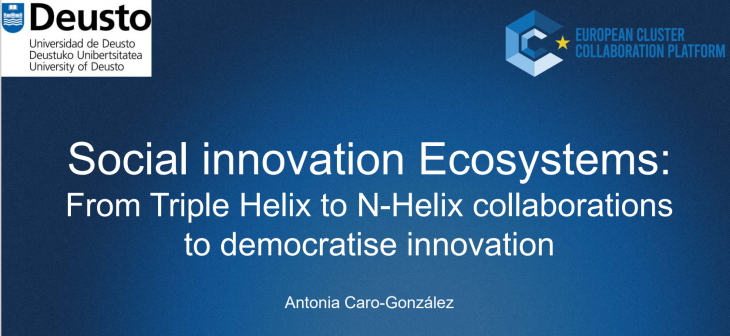European Clusters Alliance Social Innovation Ecosystems webinar recap
In the meeting on 30 March, the European Clusters Alliance discussed the concept of social innovation.
Karel Vanderpoorten from DG GROW, the European Commission, highlighted that innovation happens at a crossroads and that social innovation is most important when it is supplied by the private sector and the civil society. Typically, social innovation starts from a certain challenge and project, or it can be an adaptation of something existing. For DG GROW, social innovation is particularly important as a business model in form of social enterprises or entrepreneurship. Social innovation is also present in every funding scheme at a European level.
Antonia Caro from Deusto University then connected social innovation to the recovery from the current economic crisis. Transformative change needs complex collaborative answers, and competitiveness and growth need to go hand in hand with social innovation ecosystems. We need to bridge the horizontal (policy level) and vertical (competence) divides, work on a long term and shared vision, go from a triple to a quadruple helix collaboration, build networks with multiple nodes, and identify key agents of change.
Artur Serra from i2CAT Foundation presented the collaboration of different entities through living labs with the example of Interiors Living Lab by CENFIM. The living lab is a space of co-creation and exploration in real-life settings. Such collaborative networks can serve to accelerate the digitisation process of industrial clusters. As the integration of digital technology in companies if one of the European priorities, i2CAT works with the Catalunya Collaboratories to design a digital universal innovation ecosystem.
The morning sessions are open to everyone.
Sign up to receive invitations here.
Watch the full recording below:
